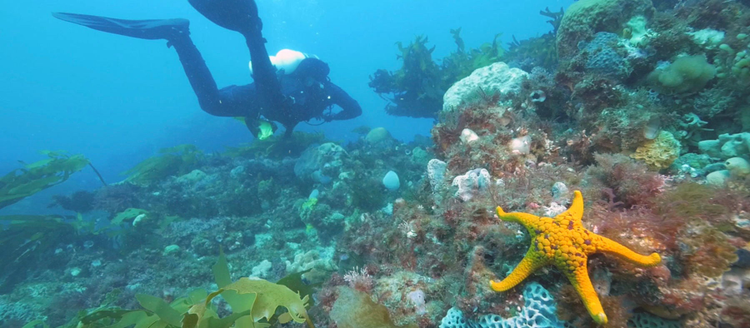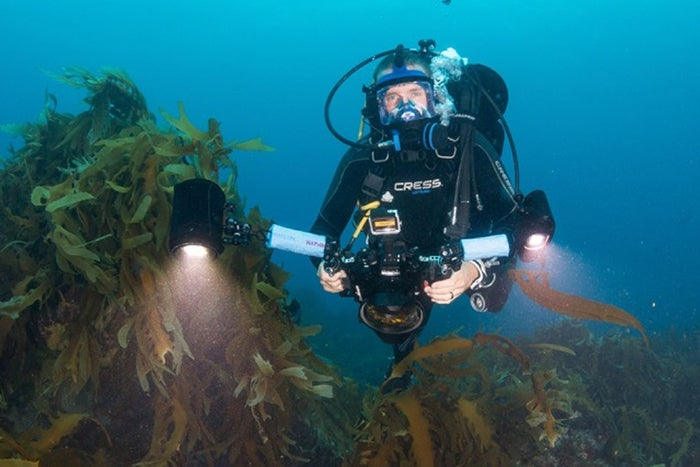Jarrod Boord’s Stunning Views from the Deep

Jarrod Boord is a filmmaker, photographer, and Adobe Stock Contributor who captures breathtaking diversity under the sea. His award-winning portfolio includes a documentary on the Port Phillip Bays marine ecosystem and hundreds of videos that have been broadcast everywhere from the BBC to National Geographic.
We talked to Jarrod about what it’s like filming underwater, his advocacy for the oceans, and life in the stock world.

Image source: Jarrod Boord.
I moved to Ocean Grove to live by the coast. When I started diving here, I couldn’t believe the diversity and colors in the marine environment. Since then, I’ve been focused on marine education and showing others, through my filmmaking and photography, why the Southern Ocean is so special.
All I have to do is get in the water and my creativity starts to flow. There is so much to film underwater and every time you dive the environment changes. You can dive the same spot every day and it will be different.
I often dive with seals. When they approach you with their mouths open showing all their teeth (just playing and trying to intimidate you), and you hold your nerve and get the shot, nothing is more exciting.
What’s your secret to capturing images below the waves?
Cinematographers light a scene to portray a story or an emotion on land, so I like to light the underwater world to show off its true beauty. As soon as you dive as shallow as five meters, you start to lose light and color — red being the first to disappear. I use high-quality underwater lights to bring back the color to coral, sponges, or marine life.
I also like to ensure that the camera is moving in most shots. We have freedom to move in any direction underwater — it’s a freedom we don’t experience anywhere else (unless you’re an astronaut!).
Your work brings attention to environmental issues like plastics in the ocean. Why do you think this is important to show?
I’ve spent a lot of time in the ocean and in recent years I’ve noticed more and more plastics along the shoreline and in the water. Out of all the major environmental issues around the world, plastic entering the marine environment is one of the easiest to solve. We just need to be more aware of how we use and dispose of single-use plastics.
There are many organizations around the world trying to raise awareness of the problem of plastics in the ocean, but it’s difficult for them to obtain high-quality underwater videos of marine plastic. So my focus is to shoot this in a cinematic way so others can use the footage in their documentaries or promotional videos without compromising on image quality.
Do you use Adobe products in your work?
I use the Adobe Creative Cloud for all of my work. I collaborate with VFX artists and graphic designers. We all share an online drive and when my After Effects artist updates files in the shared folder, it automatically updates in my Premiere Pro timeline. I love how easy it is.
You’ve said that stock work helped inspire you. Tell us more about that.
I was a photographer for years, but I started to just fill up hard drives with photos and not really have a purpose for taking them. I’d see a stunning sunset and not take my camera out of the bag because I thought, “It’s just another sunset that will end up on a hard drive and never be seen again.” Then I found stock photography and it gave me a purpose for taking photos and video. It was like I had a new client who wanted every one of my photos, as long as it had purpose.
Which of your videos are most popular?
My most popular sets of videos are underwater stock. I think they are popular because it’s expensive and difficult to do professional underwater shots and buyers around the world can find the exact shot they want on stock instead of asking an underwater cinematographer to go out and shoot it and return with footage that might not suit their project.
What are the biggest challenges and rewards of working with stock?
I think getting started is the biggest challenge in stock. This game is a slow burner — once you’ve uploaded and keyworded your images or videos, they stay up there for a very long time. You have to remember that the time it takes to stop the car, set up a photo or video, and do the post-processing might take an hour. Then, over a few years, that video or photo may sell well. The 15 minutes or 1 hour of your time is totally worth it in the long run.
Also, knowing that I have literally had hundreds of thousands of people see my work is satisfying. I am reaching a global audience every day.
Check out more of Jarrod’s work on Adobe Stock. And if you’ve got creative work to share with millions of designers around the world, find out how to get started as an Adobe Stock contributor. You can also read more about how brands and designers are using images for advocacy, and discover the most important visual trends we’re tracking in stock this year.